 "user314" (user314)
"user314" (user314)
08/31/2020 at 11:00 • Filed to: flightline, Planelopnik, planelopnik history, Sea plane, Flying Boat, Back To The Fifties, Spacelopnik, Monorail
 8
8
 23
23
 "user314" (user314)
"user314" (user314)
08/31/2020 at 11:00 • Filed to: flightline, Planelopnik, planelopnik history, Sea plane, Flying Boat, Back To The Fifties, Spacelopnik, Monorail |  8 8
|  23 23 |
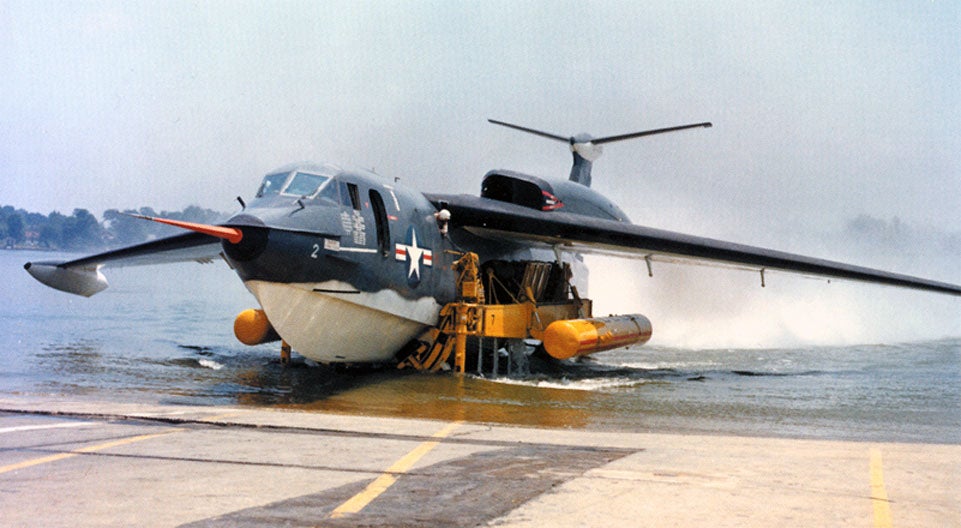
A YP6B-1 on beaching gear
!!!error: Indecipherable SUB-paragraph formatting!!! , Hertford, NC, 1959
In April of 1951, the US Navy proposed creating a “ !!!error: Indecipherable SUB-paragraph formatting!!! ” for both nuclear and conventional warfare, reconnaissance and mine-laying. Being seaplanes, this force would be mobile, and would have essentially unlimited and indestructible runways, and would (coincidentally) allow the Navy to claw back some prestige from the USAF’s !!!error: Indecipherable SUB-paragraph formatting!!! , which monopolized the US nuclear strategic role with its fleets of B-29, B-36, B-47, B-50 and B-52 bombers after WWII.
!!!error: Indecipherable SUB-paragraph formatting!!! !!!error: Indecipherable SUB-paragraph formatting!!! Aircraft Corporation of San Diego ( !!!error: Indecipherable SUB-paragraph formatting!!! ) supplied two fighter concepts to the SFF, the !!!error: Indecipherable SUB-paragraph formatting!!! and the !!!error: Indecipherable SUB-paragraph formatting!!! seaplane, and the XP5Y patrol bomber flying boat, which was later reworked into the !!!error: Indecipherable SUB-paragraph formatting!!! cargo/troop carrier. All four planes suffered from either airframe or engine issues however, and none were successful.
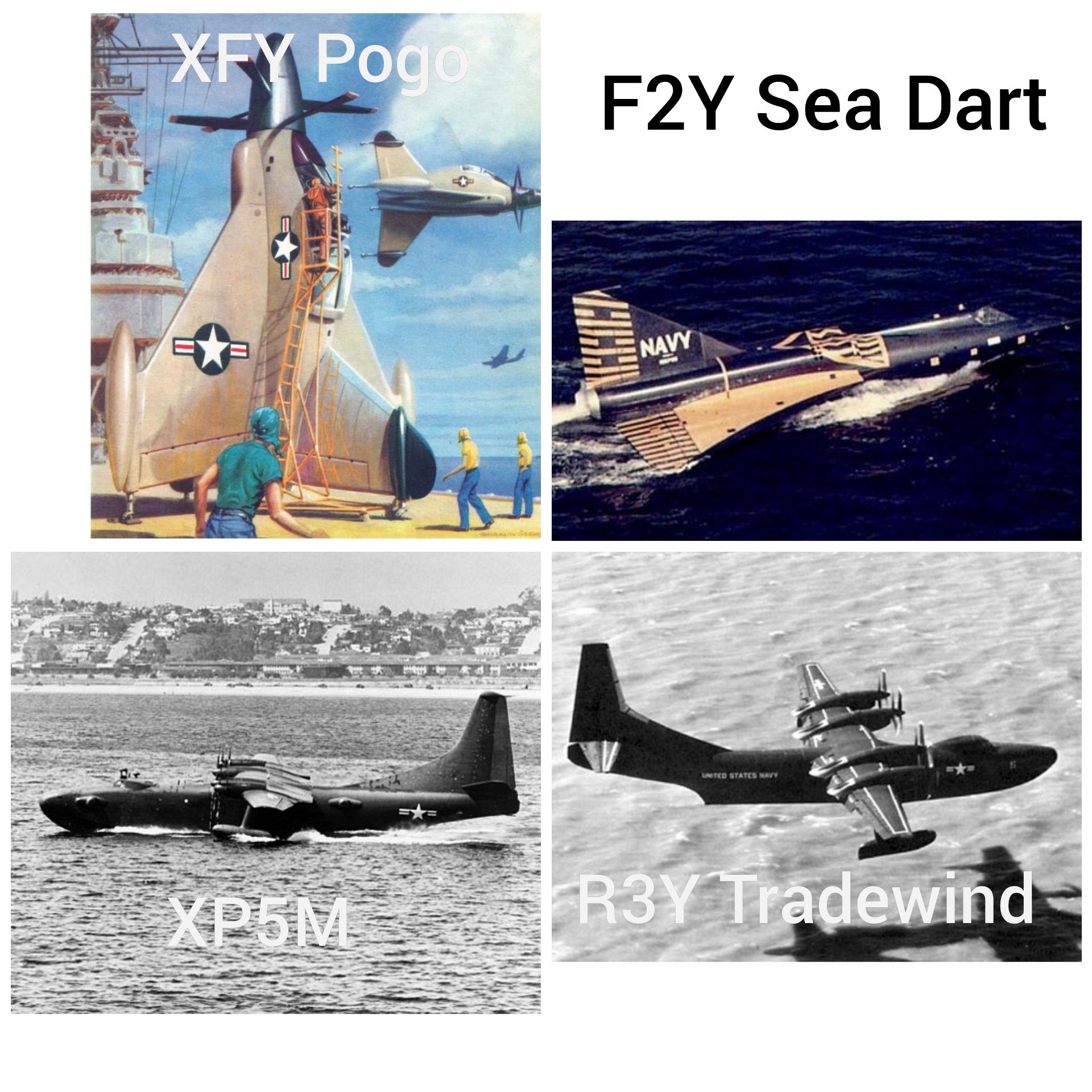
Composite photo of the other SSF aircraft
The
!!!error: Indecipherable SUB-paragraph formatting!!!
submitted a swept wing, jet-powered flying boat which shared the all-flying T tail of its
!!!error: Indecipherable SUB-paragraph formatting!!!
, as well as the rotating bomb bay which was
!!!error: Indecipherable SUB-paragraph formatting!!!
a Martin signature. Power was to be provided by the P&W J58 (yeah, same as the OXCART/YF-12/SR-71), though the (much) less powerful
!!!error: Indecipherable SUB-paragraph formatting!!!
engines were used on the initial XP6M-1 prototypes.
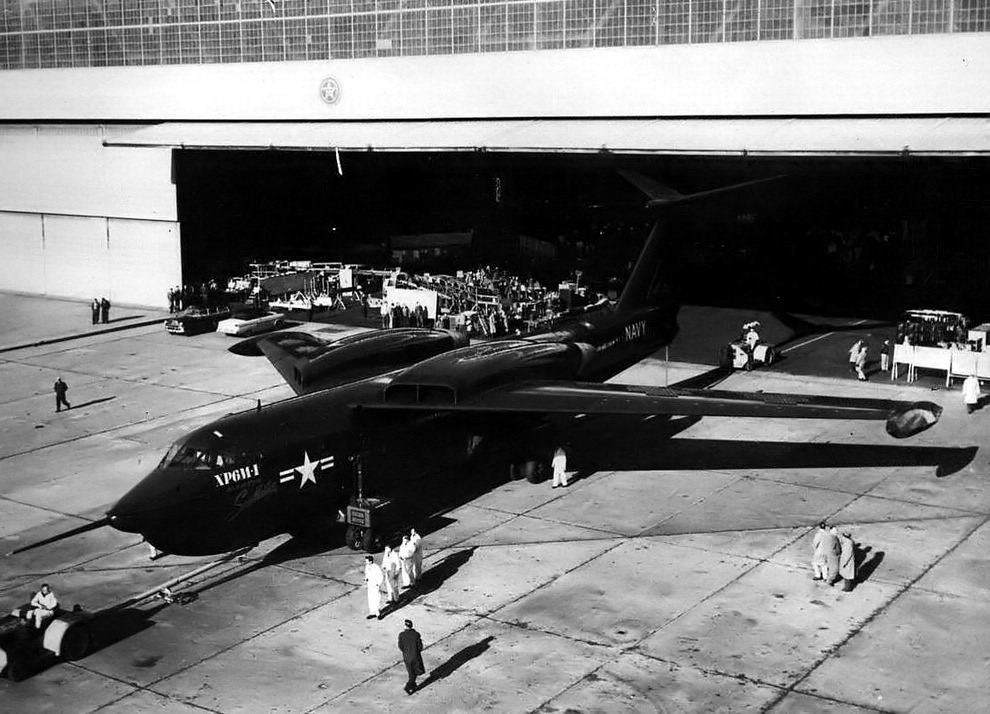
The first XP6M-1 being rolled out
The first flight of the XP6M-1 was on 14 July 1955, and test flights showed promise, however they also showed that the engines were placed too close to the fuselage, and that engaging the afterburners would scorch the plane. The first SeaMaster was destroyed on 7 December 1955 (seriously, not a good date for the USN), when the controls malfunctioned and the horizontal tail went full up. The airplane broke apart at 5,000 feet after being subjected to a 9 g outside loop, crashing into the Potomac River and killing the crew of four.
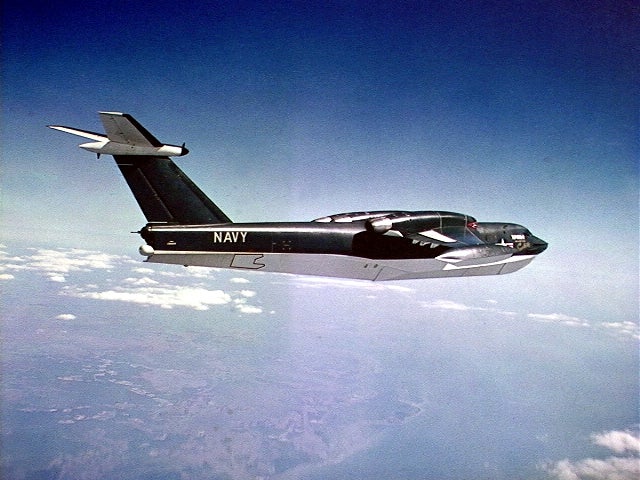
An XP6M-1 in flight, circa 1955
The second XP6M-1 first flew on 18 May 1956, but crashed on 9 November after an elevator jack failed at 21,000 feet, putting the plane into a nose up climb similar to the accident that claimed the first SeaMaster. The crew were unable to bring the nose back down, and ejected.

A YP6M-1 taking off
The modified YP6M-1 first flew in January 1958, followed by five more. At this point, testing was moved to Harvey Point, and the aircraft were fitted with test versions of the full combat suite, and were used for bombing, mine laying and recon evals. This test phase revealed severe issues with the -1, including reliability issues with the J71 engines, spray ingestion at higher weights, and a tendency to porpoise at certain trim settings. At this point, the P6M-1 program was cut, and Martin and the Navy began work on an improved version.
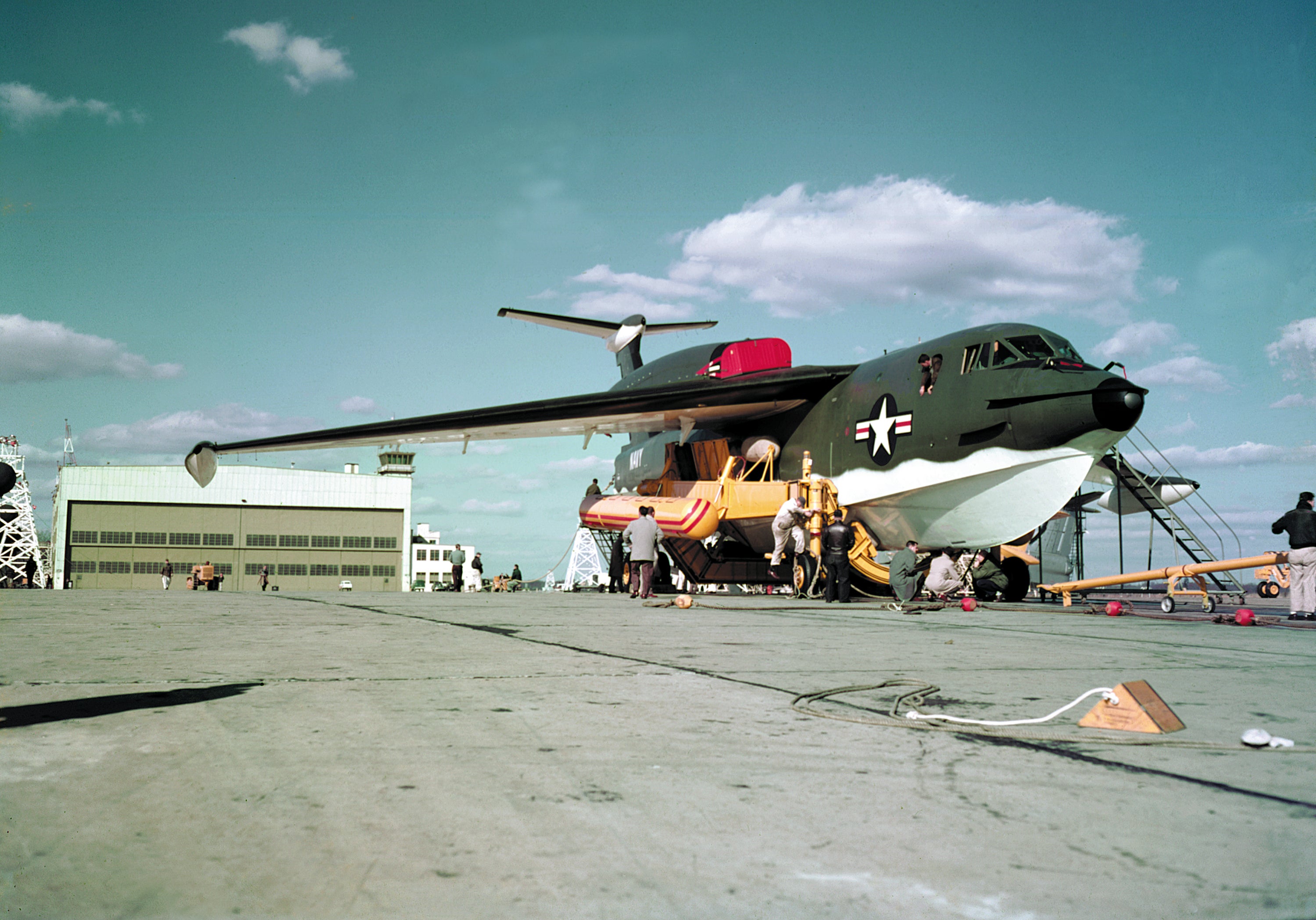
A P6M-2 loaded on to the beaching trolley
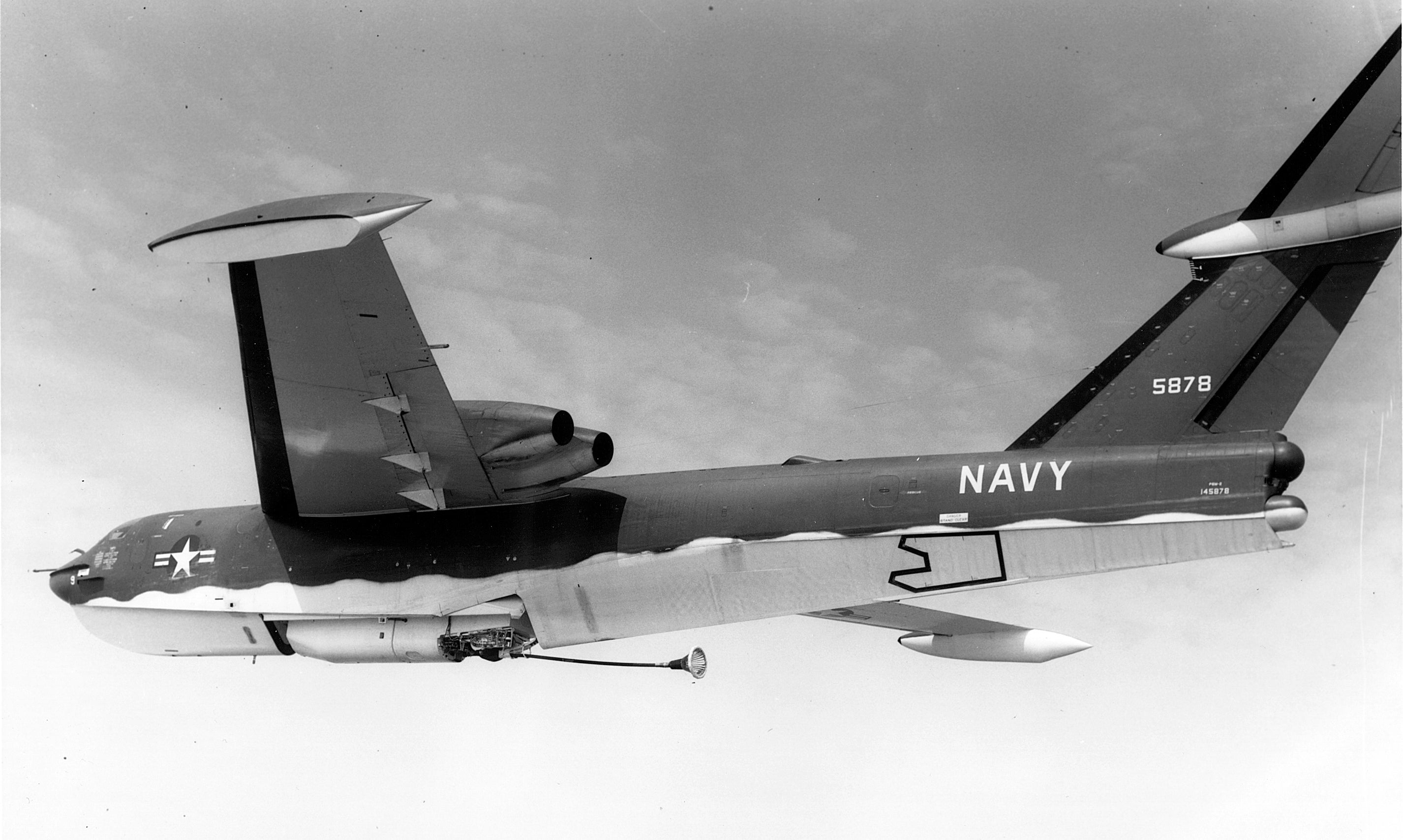
Final production model Sea Master, showing Buddy Refueling drogue
The P6M-2 would be an operational aircraft, and featured a switch to !!!error: Indecipherable SUB-paragraph formatting!!! engines, an aerial refueling probe as well as a !!!error: Indecipherable SUB-paragraph formatting!!! system, improved avionics and a redesigned canopy for better visibility. The first was rolled out early in 1959, and three were built by that summer. The -2 aircraft were quick, capable of Mach 0.9 on the deck, and ruggedly built, with skin thicknesses of over 1 inch at the roots. The change in engines however had induced serious control and maneuverability issues, with the new airplanes experiencing compressibility above Mach 0.8, resulting in rapid changes in directional trim, severe buffeting, and wing drop which required high control inputs to counter. Martin was sure it could iron out these issues, but in August the Navy informed Martin that the P6M was canceled, and that all development work was to cease. The program was behind schedule and over budget, and by this point the Navy was no longer interested in the SFF; with the !!!error: Indecipherable SUB-paragraph formatting!!! , armed with the first !!!error: Indecipherable SUB-paragraph formatting!!! s, set to enter service in December of that year, the time for the SeaMaster had run out.
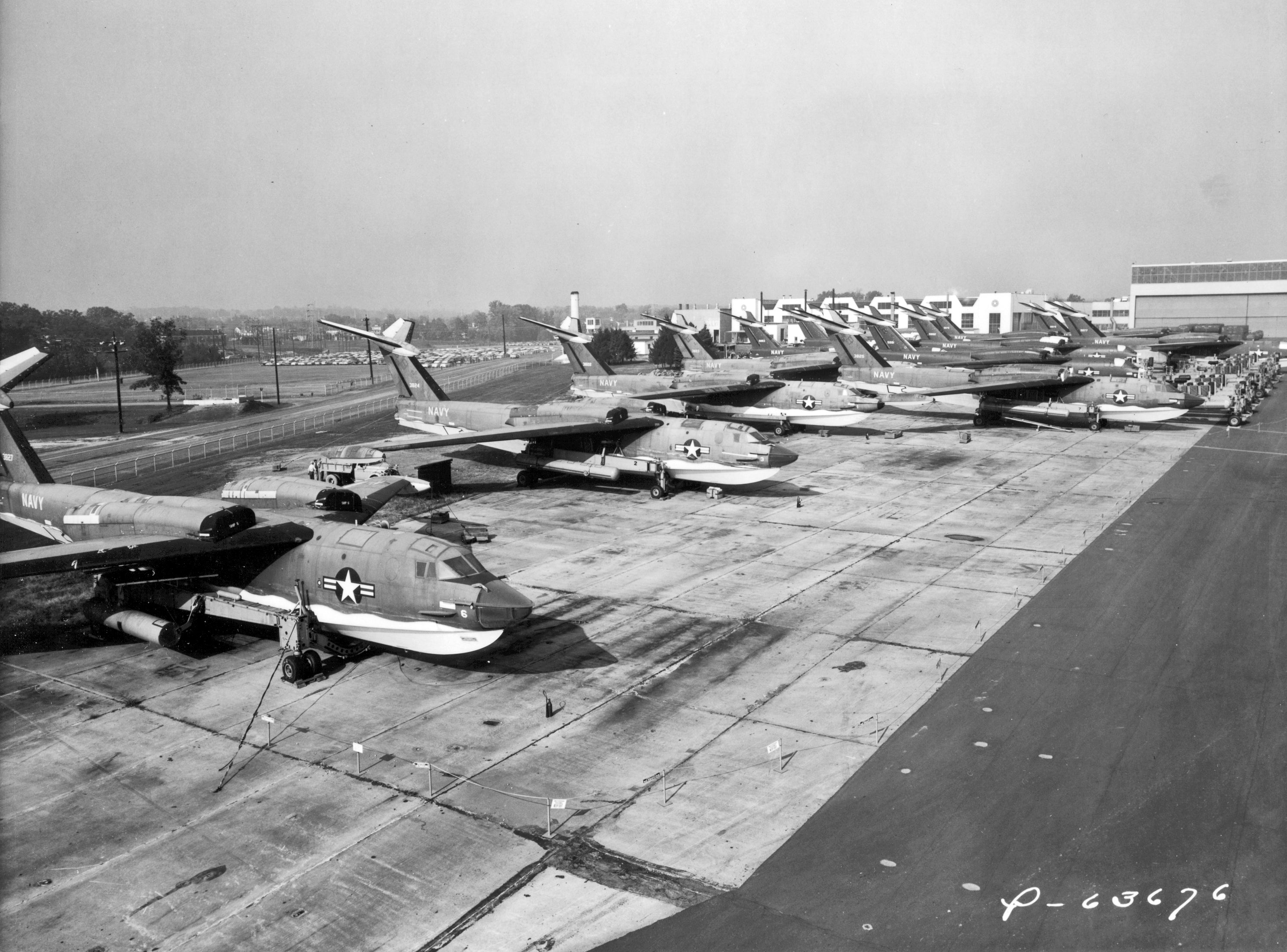
The Sea Masters outside the Martin factory.
Martin attempted to interest airlines in the P6M, offering an enlarged passenger version called the !!!error: Indecipherable SUB-paragraph formatting!!! , but there were no takers, and the remaining P6Ms were scrapp ed.
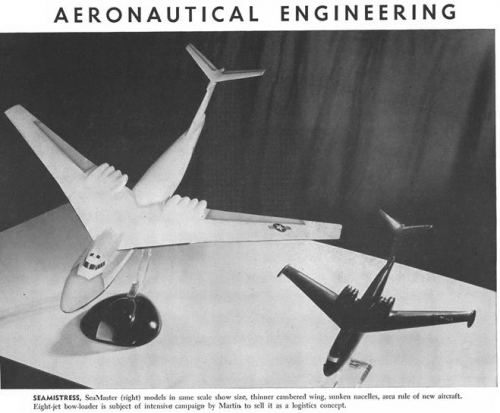
Models of the Model 307 Sea Mistress and P6M Sea Master
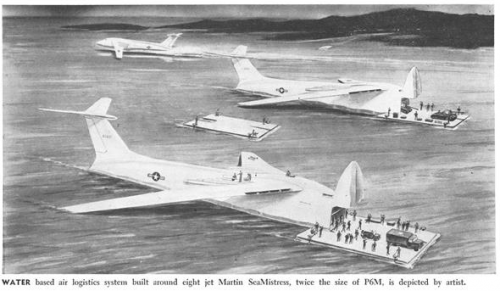
Artist’s impression of the Model 307
The SeaMaster was Martin’s last airplane, which abandoned aircraft for missiles and electronics. Martin merged with
!!!error: Indecipherable SUB-paragraph formatting!!!
in 1961, forming
!!!error: Indecipherable SUB-paragraph formatting!!!
, which built missiles and rockets, including the
!!!error: Indecipherable SUB-paragraph formatting!!!
,
!!!error: Indecipherable SUB-paragraph formatting!!!
family of ICBMs and space launch vehicles, the
!!!error: Indecipherable SUB-paragraph formatting!!!
launch vehicles (acquired from
!!!error: Indecipherable SUB-paragraph formatting!!!
) and the
!!!error: Indecipherable SUB-paragraph formatting!!!
,
!!!error: Indecipherable SUB-paragraph formatting!!!
, and
!!!error: Indecipherable SUB-paragraph formatting!!!
space probes. Martin Marietta also produced paints, dyes, metallurgical products, construction materials, and other goods, as well as the
!!!error: Indecipherable SUB-paragraph formatting!!!
for
!!!error: Indecipherable SUB-paragraph formatting!!!
. The company was acquired by Lockheed in 1995, though it later spun off
!!!error: Indecipherable SUB-paragraph formatting!!!
as a separate company.
 SBA Thanks You For All The Fish
> user314
SBA Thanks You For All The Fish
> user314
08/31/2020 at 11:04 |
|
Thanks for this.... the whole history of the Navy falling in love with jets while simultaneously trying to scratch that pesky “amphibious airframe” itch is pretty entertaining. We tried some wild stuff. The Sea Dart alone was a riot, apparently.
 facw
> user314
facw
> user314
08/31/2020 at 11:12 |
|
I didn’t realize they built so many of these.
In any event, we should have more flying boats.
 ttyymmnn
> user314
ttyymmnn
> user314
08/31/2020 at 11:12 |
|
The world needs more giant jet powered flying boats. That beaching trolley is wild. It’s not like you have those things lying around. You have to design and build it as part of the whole system.
with the new airplanes experiencing comprehensibility above Mach 0.8
This an aeronautics term I am unfamiliar with.
 InFierority Complex
> ttyymmnn
InFierority Complex
> ttyymmnn
08/31/2020 at 11:22 |
|
Typo and it’s meant to be compressibility?
 ttyymmnn
> InFierority Complex
ttyymmnn
> InFierority Complex
08/31/2020 at 11:29 |
|
I think so. I think Skyfire got bitten by autocorrect.
 Darkbrador
> facw
Darkbrador
> facw
08/31/2020 at 11:31 |
|
W e do, Sometimes not on purpose.
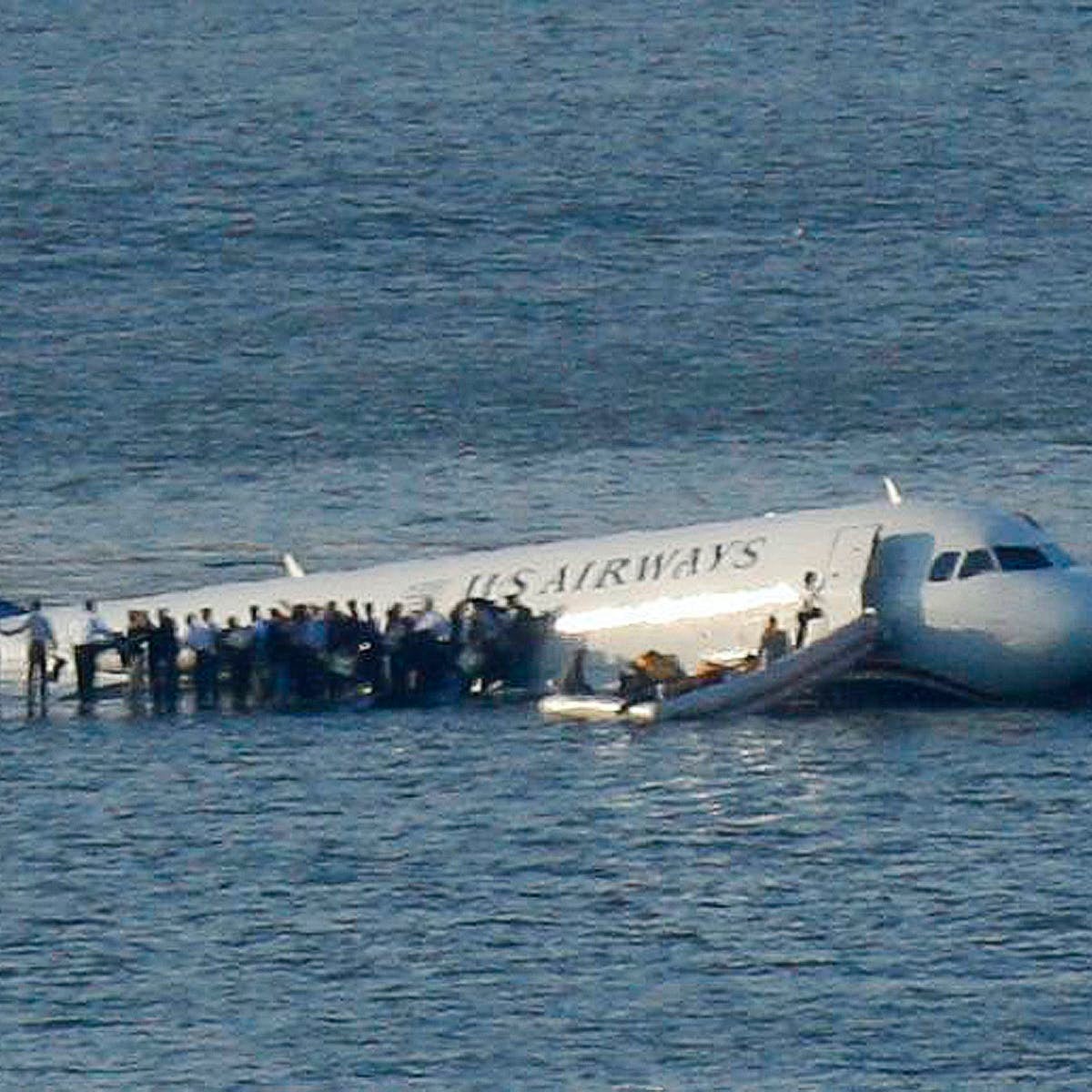
 facw
> Darkbrador
facw
> Darkbrador
08/31/2020 at 11:37 |
|
I’ve said it before, but I would totally be in favor of someone starting a commut er service along the Northeast Corridor using Be-200s:
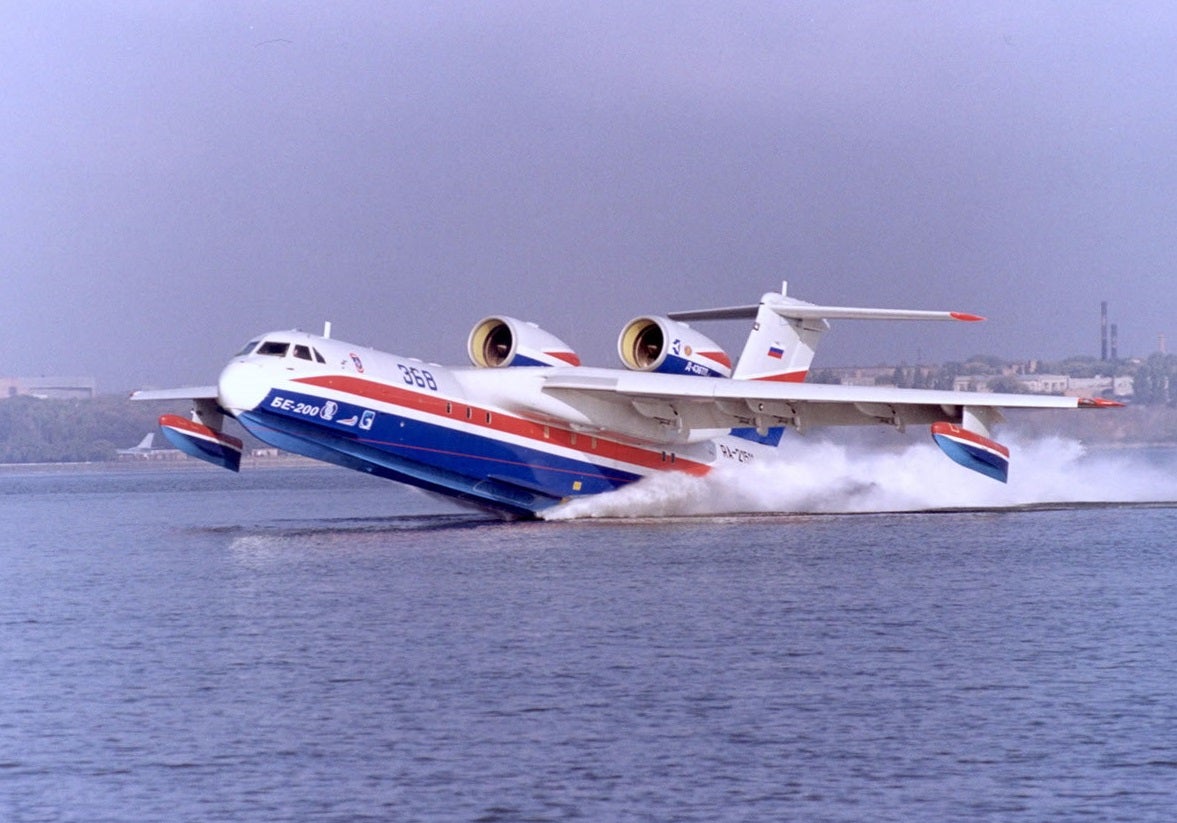
Cape Air is starting flying Boston Harbor to the East River in New York, but using boring float planes instead of cool flying boats.
 Darkbrador
> facw
Darkbrador
> facw
08/31/2020 at 11:58 |
|
cool flying boat ?
 TheRealBicycleBuck
> user314
TheRealBicycleBuck
> user314
08/31/2020 at 11:59 |
|
You’re doing a great job with these posts and I’m really enjoying them. I hope you are as accepting to error corrections as ttyymmnn. In addition to the error he spotted, I found “... and the remaining P6Ms were scraped.” I’m pretty sure you meant scrapped.
Keep up the good work!
 hillrat
> Darkbrador
hillrat
> Darkbrador
08/31/2020 at 12:08 |
|
That song was amazing!
 ranwhenparked
> facw
ranwhenparked
> facw
08/31/2020 at 12:12 |
|
Were I a billionaire, I'd have one of those with a luxury interior. A private jet and yacht all in one.
 user314
> ttyymmnn
user314
> ttyymmnn
08/31/2020 at 13:08 |
|
.........scrap .
 user314
> TheRealBicycleBuck
user314
> TheRealBicycleBuck
08/31/2020 at 13:11 |
|
No, see, they had to scrape barnacles off the hulls....
(JK, thanks for the catch.)
 user314
> ttyymmnn
user314
> ttyymmnn
08/31/2020 at 13:22 |
|
Chrome/Google’s spell check is maddening at times.
 ttyymmnn
> user314
ttyymmnn
> user314
08/31/2020 at 13:31 |
|
I’ve had to go into my Mac settings and add certain words that I use often and it always replaces. Somehow, in the deep dark past, I typed “Superkmarine” and it kept changing to that every time I wrote about the Spitfire (or anything else Supermarine).
 user314
> facw
user314
> facw
08/31/2020 at 13:33 |
|
I left it out, but even with the issues uncovered, the Navy was doing conversion workups, with introduction expected within 6 months, when they canceled the P6M-2.
 user314
> SBA Thanks You For All The Fish
user314
> SBA Thanks You For All The Fish
08/31/2020 at 13:36 |
|
I should do the Sea Dart eventually, They went back and forth between single and dual skis , and taxiing or taking off against the waves, rather than along them, would set the ski(s) to vibrating something fierce ....
 user314
> ttyymmnn
user314
> ttyymmnn
08/31/2020 at 13:40 |
|
Tell me about it. I would have given up on these posts after the second day were I “typing” them out on my tablet; Mobile Chrome + Samsung’s Swype are horrible for that.
 SBA Thanks You For All The Fish
> user314
SBA Thanks You For All The Fish
> user314
08/31/2020 at 13:41 |
|
Apparently (who coulda known?) jet engines in close proximity to sea spray can ingest large quantities of very saline water... Made for some interesting trials .
Would love to see a post!
 user314
> facw
user314
> facw
08/31/2020 at 13:43 |
|
I was unaware of the Model 307 until I started writing this one up. That drawing of two of them, noses open and offloading cargo/passengers.... Talk about a “What could have been.... ” moment.
 user314
> SBA Thanks You For All The Fish
user314
> SBA Thanks You For All The Fish
08/31/2020 at 13:51 |
|
See, the Sea Dart was just introduced too soon. I remember, back in the 90's, an article from either PopScience, PopMechanics or Air&Space about jet engines running on sea water (IIRC, the pilot of this hypothetical fighter seaplane had the callsign “Pelican”) .
 SBA Thanks You For All The Fish
> user314
SBA Thanks You For All The Fish
> user314
08/31/2020 at 13:58 |
|
I thought the callsign was “Goose” but maybe I’m thinking about something else...
 BoxerFanatic, troublesome iconoclast.
> user314
BoxerFanatic, troublesome iconoclast.
> user314
08/31/2020 at 17:14 |
|
I saw a youtube video about SeaMaster.
It is kind of unfortunate that it happened at just the wrong time, because it seems like a pretty cool concept.
ICBMs, Air Force roles, and naval submarine-fired missles kind of sunk that role for a naval seaplane bomber.
It could have evolved and y ie lded some interesting civilian variants, though.